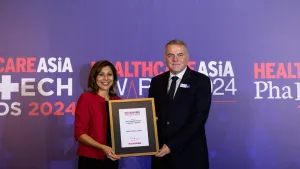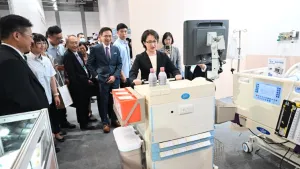
Medical equipment, services sectors to benefit from China’s fiscal boost
The Ministry of Finance may issue $142b of special bonds to stimulate consumption.
China's easing fiscal policies could improve cash flow for the medical services and medical equipment sectors, according to UOB Kay Hian.
The Ministry of Finance may issue $142b (RMB 1t) of special bonds aimed at stimulating consumption amidst concerns about a sluggish economic recovery post-COVID.
These measures are expected to release liquidity, boosting consumer and business spending, including potential upgrades to business equipment and new subsidies, which could benefit companies in the medical equipment and services sectors.
The hospital equipment upgrading programme, part of these fiscal policies, may accelerate business activity by generating new purchase orders and increasing the market share of multinational firms in the medical equipment space. For example, Mindray has been leveraging on its global sales network and technologies to nurture its emerging consumable product lines, such as vent products, orthopaedics, minimally invasive surgical products, and electrophysiology products, in recent years.
Medical service providers are also likely to benefit from the improved cash flow, UOB Kay Hian noted. With tighter cost controls under social medical insurance leading to price cuts and delayed payments for medical products and services, favourable fiscal policies and increased medical insurance income may ease financial pressure on medical insurance funds, ultimately benefiting service providers.
In particular, Aier Eye Hospital Group has grown its outpatients and surgeries by 9.2% and 6.9% year-on-year respectively in the first half of the year despite considerable service price pressure. Moreover, the company continues its mergers and acquisitions to further penetrate lower-tier markets in China and overseas markets.
RMB 1 = $0.14


















 Advertise
Advertise


